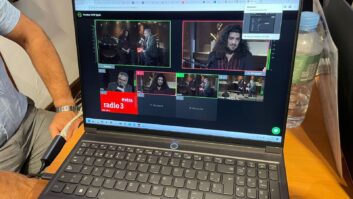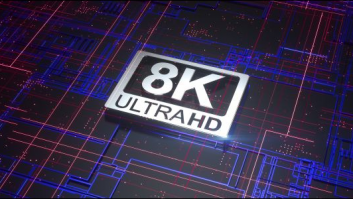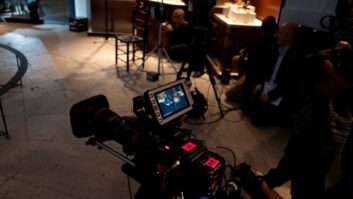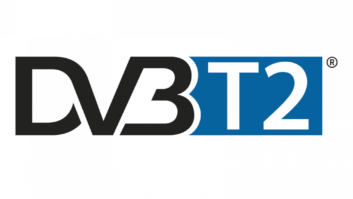Spain’s RTVE has carried out what it says is the world’s first broadcast of an UHD 8K signal in DVB-T2.
The test was conducted in conjunction with University of Madrid, Cellnex, Dolby, Sapec, Sony, SGO, and Samsung.
The display of the signal was carried out by Samsung, which prepared an adapted Samsung QLED 8K model for the test.
The text faced a number of challenges, including:
- Compressing the UHD-8K signal that represents more than 33 Gbps of video, in less than 33 Mbps, and maintaining the video quality that such a signal requires. This data gives a compression ratio higher than 1000: 1. This challenge meant Sapec had to to perfectly adjust all the parameters that improve HEVC coding and optimise them to achieve it.
- Handle the huge amount of bits that a UHD-8K signal (48 Gbps) generates, since UHD-8K generates 50 images of 32 Mpixels (32 times more than the HD signal).
- The computing capacity was estimated to be greater than about 6 times that necessary to encode UHD-4K.
The signal itself included new technologies such as:
- HDR with Hybrid Log-Gamma transfer function approved in the STD-B67 standard by the ARIB (Association of Radio Industries and Businesses).
- 50 frames per second frame rate
- Extended colour gamut, meeting recommendation of the ITU-R BT.2020, 10-bit depth and 4: 2: 0 subsampling.
- 5.1.4 multichannel audio.
In terms of compression, the text used HEVC for video coding, Dolby’s AC4 audio coding format, and the DVB-T2 standard for the transmission of content.
The binary rate resulting from the audiovisual content was around 32 Mbps. The parameters of the COFDM modulation used for transmission via DVB-T2 from the UPM were: 32k extended, guard interval 1 / 128 and pilot pattern PP7.
The test also included a single PLP, with modulation of 64QAM and FEC of 5/6. With this configuration, a maximum binary rate of around 36 Mbps was reached, proving it to be a valid means to transmit the content without any issues. On the part of the UHD channel broadcast by Cellnex Telecom, the modulation parameters used for DVB-T2 transmission were: 32K Ext. 256QAM 2/3 GI 1/8 PP2 SISO. It is also a valid configuration to support bit rate requirements.






